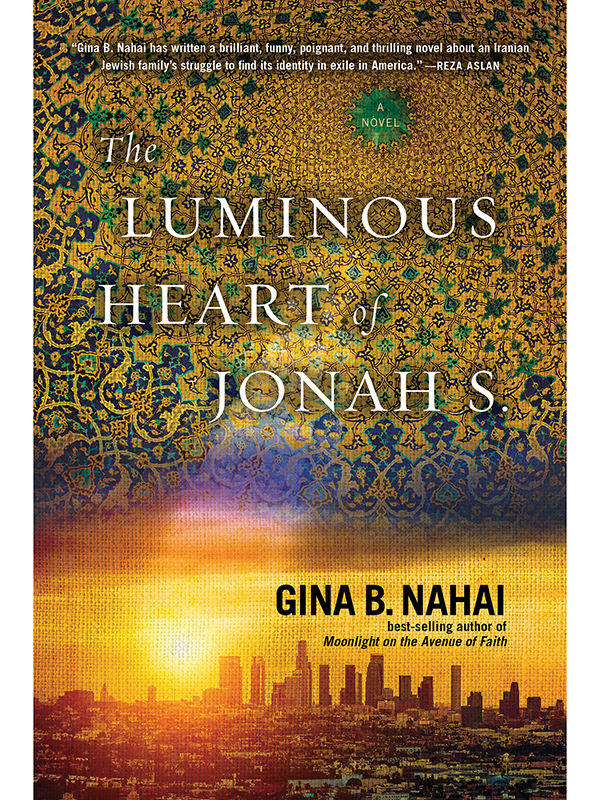
The Luminous Heart of Jonah S.
کتاب های مرتبط
- اطلاعات
- نقد و بررسی
- دیدگاه کاربران
نقد و بررسی

Starred review from August 4, 2014
Like Cry of the Peacock and Moonlight on the Avenue of Faith, Nahai’s new work is a multigenerational epic of Iranian Jews. It shifts from modern L.A. to old Tehran as it follows the wealthy, influential Soleyman family. Raphael’s Son (as he is called throughout), a Soleyman bastard, in one or possibly both senses of the word, is found murdered in L.A. But is he really dead? His body has disappeared. Hated by rival family members and acquaintances alike, he could have been killed by anyone, from his long-suffering wife to any of the clients ruined by his Ponzi scheme. Nahai’s retelling of Iran’s recent history and her depiction of Iranian Jews—both in their homeland and as exiles—is eye-opening. Magical elements abound: the incandescent hearts of certain Soleyman males, the smell of the sea emitted by Elizabeth, Raphael’s Son’s aunt (whom he hoped to ruin), and the proclivity of dead Soleyman bodies to disappear. It’s a riveting tale, requiring full concentration. Readers will be well rewarded.

November 1, 2015
When Nahai published her first novel, Cry of the Peacock, in 1992, she told, for the first time in any Western language, the 3,000-year story of the Jewish people of Iran. Subsequent works (Moonlight on the Avenue of Faith; Caspian Rain) were set in the Jewish ghetto of Tehran and in Los Angeles, the new epicenter of the Persian Jewish community in America. Part murder mystery and part family saga, her latest novel, a fiction finalist for the 2014 National Jewish Book Award, features a wealthy Iranian Jewish family, plagued by a shady Los Angeles businessman who has long claimed to be the heir to the family's fortune. When he is found murdered and then his body disappears, there is a long list of possible suspects. (LJ 11/1/14)
READ-ALIKES Dora Levy Mossanen's Scent of Butterflies, Parnaz Foroutan's The Girl from the Garden, and Dalia Sofer's The Septembers of Shiraz.
Copyright 2015 Library Journal, LLC Used with permission.

Starred review from October 1, 2014
Raphael's Son, a mega-wealthy Iranian Jew with many enemies, has been murdered. The story behind his odd name and his life of cruelty and revenge is labyrinthine and dramatic. It begins in 1950s Tehran, where the Soleyman clan prospers under the shah, even though Raphael, the oldest son, is strangely afflicted with an inexplicably glowing heart. He comes under the spell of an enigmatic older woman, who, years after his death, reappears with a boy she improbably claims is Raphael's son. Her relentless battle with Raphael's urbane brother, Aaron, and his quiet, math-prodigy wife, Elizabeth, to secure Raphael Son's fair share of the family fortune precipitates a storm of otherworldly catastrophes that follows the Soleymans as they flee Iran for Los Angeles in the wake of the revolution. Lyrical, shrewd, and daring novelist Nahai (Caspian Rain, 2007) experienced this exodus and writes with acute emotional and nearly anthropological perception, laser-wit, and deep compassion about Iranian temperaments and social conventions, the sorrows of exile, and the volatile dynamics of L.A.'s cultured and proud Iranian Jewish enclave. With touches of magic realism, extraordinary characters, and a spiraling, multigenerational plot involving fraud, a murder mystery, epic suffering, heroic generosity, women's struggle for freedom, and the clash between East and West, Nahai's mythic, tragic, often beautiful immigrant family saga illuminates timeless questions of prejudice, trauma, inheritance, loyalty, and love.(Reprinted with permission of Booklist, copyright 2014, American Library Association.)

























دیدگاه کاربران